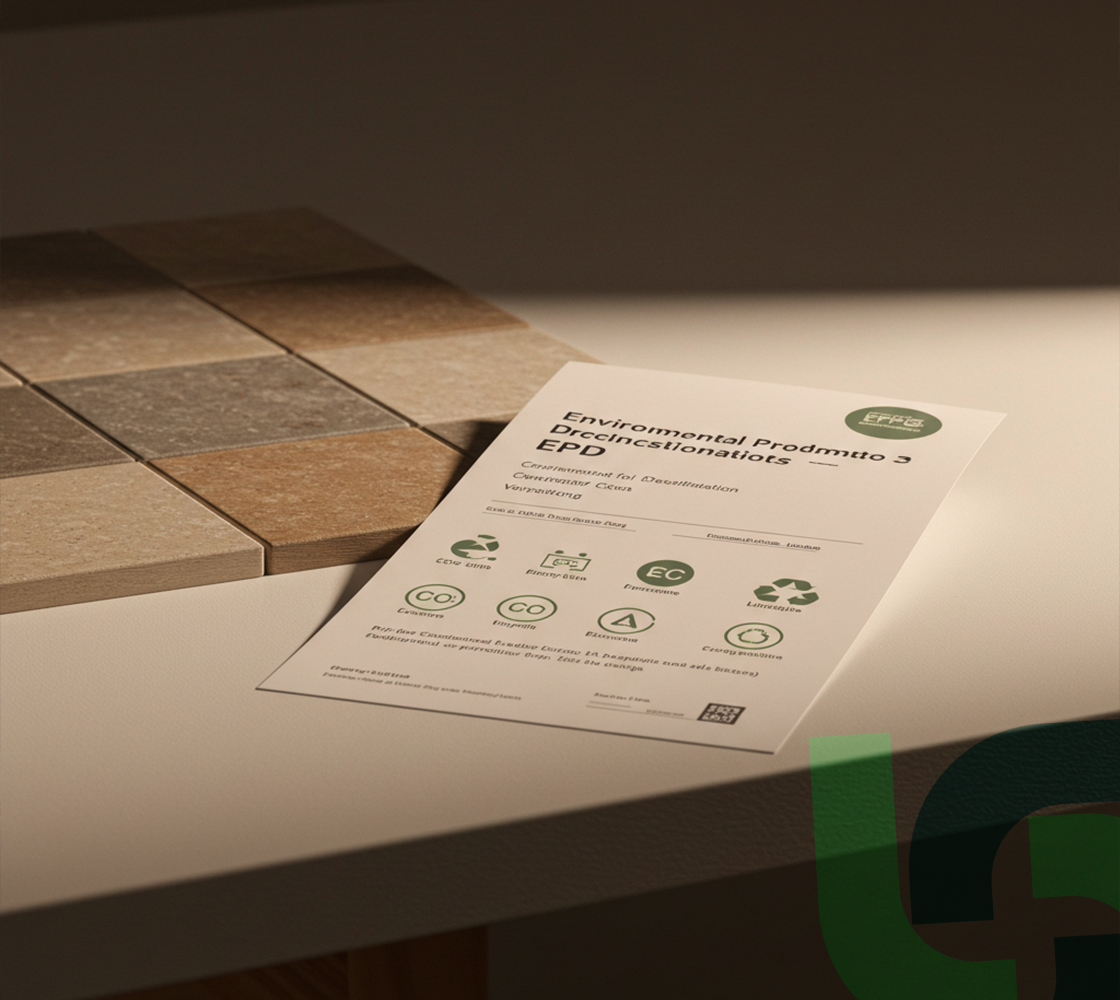An Environmental Product Declaration (EPD) is an official, third-party verified document that transparently presents the full environmental impact of a specific product throughout its life cycle — from raw material extraction, through manufacturing and transportation, to use and end-of-life disposal.
An EPD is a transparent and objective tool, developed in accordance with international standards (ISO 14025 and ISO 14040), and verified by an independent body to ensure accuracy and credibility.


Transparency and Credibility
Demonstrates your commitment to sustainability using neutral, reliable data verified by a third party.
Access to International Markets
Many international projects, such as LEED, require EPD-certified products.
Market Differentiation and Competitiveness
Showing environmental commitment gives your product a competitive edge with consumers and developers.
Support for Sustainable Design Decisions
Enables engineers and architects to select products based on environmental performance.
Continuous Improvement
Life Cycle Assessment (LCA) helps identify strengths and weaknesses in your product, supporting sustainable development.
Product Definition and Application of Product Category Rules (PCR)
Define the specifications of the target product.
Select the appropriate Product Category Rules (PCR) — a framework that outlines how to conduct the environmental assessment for that product type.
This ensures compliance with the requirements of regulators, construction firms, and sustainability-focused projects.
Conducting a Life Cycle Assessment (LCA)
Analyze environmental impact across all life cycle stages: raw materials, manufacturing, distribution, use, and end-of-life.
Use accurate, real-world data to ensure reliable results.
Preparing the EPD Document
Provide a detailed description of the product.
Include quantitative environmental data (e.g., carbon footprint, water consumption, energy use, air emissions, etc.).
Define the functional unit and assumptions used in the analysis.
Third-Party Verification
An internationally accredited independent verifier will:
Review the methodology and data.
Confirm compliance with ISO standards and selected PCR.
Issue a certificate of conformity.
Registration and Publication of the EPD Document
Register with a globally recognized platform such as:
• The International EPD System
• Global EPD
• Or local systems depending on market needs
The document is published and made accessible to the public, investors, and engineers involved in sustainable projects.
Whether you’re a manufacturer, developer, or building materials supplier, we’re here to help you transform your environmental commitment into a true strategic advantage. Contact us today to start your journey toward greater environmental transparency and professionalism.